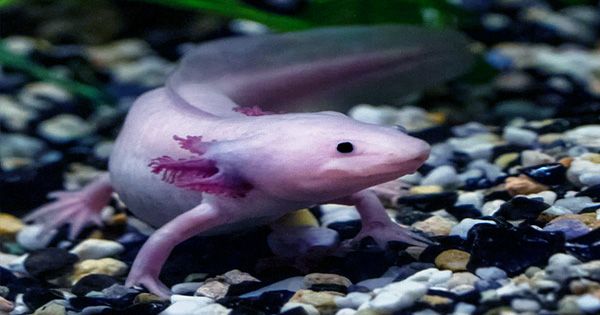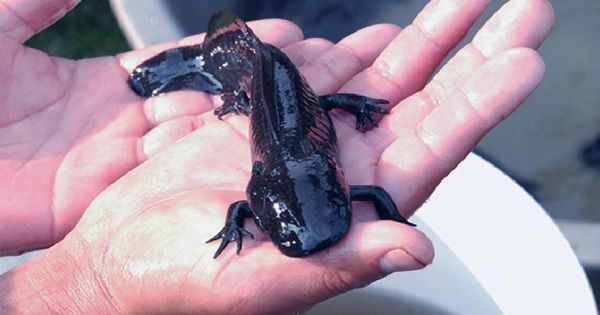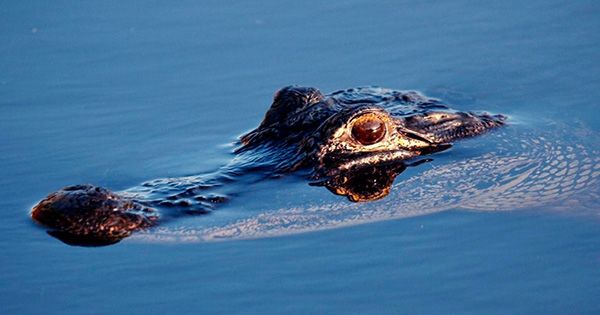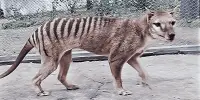Axolotls as pets have grown in popularity and with so many on displays in tanks, a few people have had front-row seats to the transition of uncommon axolotl morphs. When captive axolotls spontaneously change from an aquatic to a terrestrial species, this occurs.
While many creatures undergo this transition (tadpole to frog, for example), the motivation and appearance of unusual axolotl morphs is more complicated. Axolotls are highly endangered in the wild, and the few remaining creatures can only found in Mexico City’s canals — yet they have spread over the world as research and domestic animals. Just six persons founded all captive axolotls, according to axolotl specialist Dr Catherine McCusker of the University of Massachusetts Boston.
Inbreeding increases the danger of difficulties, as we know from the various breed-specific health issues that plague domestic dogs – something the burgeoning colony of caged axolotls could not avoid. Captive axolotls crossed with tiger salamanders, a near cousin, to boost genetic variety and make the animals healthier. The difference between the two species is that axolotls are paedomorphic, which means they maintain some of their young characteristics into maturity. This is because they do not create the required hormones that signal their bodies to “grow up.”

Tiger salamanders, on the other hand, change form as they get older, transitioning from aquatic to air-breathing adult salamanders. Humans produced a creature with various alternatives in their later life clothing by crossing the axolotl with the tiger salamander. Some will stay aquatic axolotls, while others will evolve into unusual axolotl morphs – something that will likely be perplexing to the uninitiated pet parent. “The first and most noticeable alteration is that their gills begin to regress,” said McCusker, an axolotl researcher. “Once that’s done, they won’t be able to breathe underwater and would need ‘terrestrial’ stuff to crawl about on.”
“Their skin undergoes several modifications as they adjust to their new environment. Their tails lose their flipper and fin-like skin.” McCusker is now employing Mexican axolotls as a model for limb regeneration. Axolotls with rare morphs lose part of their regeneration abilities, but those who keep their paedomorphic condition are masters at regrowing entire limbs. Courtney Bailey (as @SalamanderWithASign) documented the evolution of an axolotl named Gollum in a blog post on Imgur. Bailey had heard of rare axolotl transformations but had never expected to see one up close.
“When I purchased Gollum, he looked like this.” He was a typical axolotl, a lovely little smile, webbed feet, and fluffy gills. He intended to be an axolotl for the rest of his life, as are all axolotls “one of the posts says, “That memo did not reach Gollum.” “I noticed he was looking a little’sick’ one day. I isolated him from his tankmates, and after a week, he resembled the image above. He didn’t have gills, webbed feet, or a need for water.” “This is an once-in-a-lifetime opportunity.”
Since seeing Gollum’s light up, Bailey has made it her mission to raise awareness for uncommon axolotl morphs, which are notoriously difficult to care for due to a lack of information available online. “I’ve been speaking with a morph specialist who has successfully preserved morphs for over ten years. He claims that if Gollum is properly cared for, he will likely live a long life. The problem with most humans is that they do not know how properly care for animals I would like to introduce him to the rest of the world. I’d like to record how I care for him so that others might learn from my experience and extend the lives of their own morphs.”
















